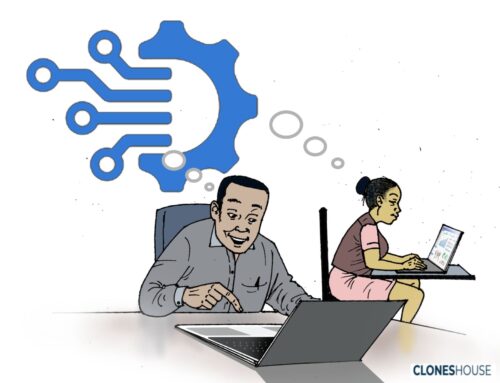Introduction
Monitoring is the continuous assessment of a project while it is being implemented with the aim of improving the functionality and design of the project (Mikkelsen 2005: 265). On the other hand, evaluation is carried out mostly at the end of the project or at specific times during the phase of a project with the aim of assessing the accountability of a project and determining the future project design (Casley and Kumar, 1986). Stem et al., (2005), remarked that practitioners have come to acknowledge that effective good management is beyond implementation and so effective management is now linked to a well-designed monitoring and evaluation system. Basically, monitoring and evaluation provides accountability and guide the impact of a project, answering questions on whether a project is working or not. Thus, monitoring and evaluation serves as an early warning signal of issues and leads to early solutions and a basis for better decision making (Anto and Kovac, 2000).
For this literature review, monitoring and evaluation will be considered together as one, with reference to DFID (2016) which takes into account that monitoring and evaluation of a project is extremely important and expect that projects give time and resources to monitoring and evaluation from the beginning of a project rather than waiting until the end of a project (Chakroune, ESPA). However, according to UNDP (1997), the term ‘monitoring’ and ‘evaluation’ are closely linked but yet differs. This literature review will focus on their origins, importance, criticism, and participation in monitoring and evaluation.
Origin of monitoring and evaluation
Monitoring and Evaluation (M&E) was introduced because of poor performance, inefficiency and lack of accountability by organisations, particularly non-governmental organisations (Stem et al. 2005). Azzone and Amaboldi (2010) illustrated that the inception of performance evaluation emerged out of the new public management. Its source, linked to performance measures, originated over a hundred years ago. From this view, efforts made by the ‘International City Management Association’ before 1940 demonstrated a positive expectation because it is believed that if performances are measured and captured, organisations will improve performance. However, there was limited development until the 1970s (Smith and Schiffel, 2006).
Moreover, the idea of measuring the performance of an aided project through phases of the project, as opposed to understanding what went wrong or right was promoted first in the 1970s by Herb Turner (Cracknell, 2000). Longenecker (1985) highlighted that Peter Drucker in 1974 asserted that organisations are supposed to supervise for performance and result, like setting priorities and defining objectives and measures. Notably, Casley and Lury (1981) in the early 1980s were major advocates for the establishment of M&E by the World Bank. Be that as it may, M&E became well known in the 1980s, simultaneously with the policies of Margaret Thatcher, the then prime minister of the United Kingdom (Hood, 1995).
Why monitoring and evaluation?
Furthermore, the requirement by donors that non-governmental organisations should adopt M&E systems for their funded projects is generating surprising effects, notwithstanding, M&E is to improve accountability and guide project implementation (Coleman, 1992). Cracknell (2000) postulated that M&E has been used commonly in development and has aided organisations over the last few decades and it is essential for aided agencies to know if their development work has failed or progressed. Conventionally, it involves senior managers or outside specialists coming in to measure performance against pre-set indicators with the use of standardised procedures (Wallace, 2000: 53). In the same way, Diefenbach (2009) exaggerated the significance of this development tool, as the tool is to methodically monitor and assess critical part of an organization’s performance, for the purposes of impact assessment, project management and accountability to bring about increase in efficiency, productivity and public accountability.
Recognising the significance of M&E in development and the strategic impact of a project must be of primary importance in order for M&E system to be effective.
This means that there should be an emphasis on the outcome of what the project wants to achieve both in the short and long term, and looking analytically at the effect of a project and who benefits from it, along with describing activities and their outputs (Bornstein, 2006). With this in mind, it is important for senior managers to entirely support the procedure of developing monitoring, evaluation and review systems because these systems is an essential part of project management and accountability (Mikkelsen, 2005). Additionally, Gosling and Edwards (2003) illustrated that M&E is a system used for collecting information about the progress of a project. The significance of this system is to help people involved in the project take appropriate decision, especially donors. Although, it must not only be a means of gathering information but also a communication system, where there is a flow of information between the people involved (Wholey and Hatry, 1992). Correspondingly, vital elements of M&E are discussed below:
Setting of indicators
This is very essential to M&E process and it measures progress. However, indicators can change at any time, so frequent reviews are recommended. The monitoring system should be designed to meet the specific needs of a project, organisational structures and specific requirements of donors. To set the purposes of monitoring systems, deciding who needs a monitoring system and what for, and setting the objectives of the monitoring systems must be taken into consideration (Gosling and Edwards, 2003). Specifically, setting indicators addresses what information is needed to make day to day decisions about the project, as managers and staff will need the information to know about the progress and factors affecting the project, for them to plan and manage the project successfully (Rossi and Freeman, 1993). Thus, the information is required to maintain high standards, identify problems and seek solutions at an early stage, provide a progress report, identify opportunities, provide information for future evaluations and look at the process of development (Lusthans et al. 1999). Indicators are further needed to be accountable to donors and people affected by the project. Although different donors have different monitoring requirements, if a project is monitored properly to ensure good management, the information needed for accountability will always be available (Mahaney and Lederer, 2010). So the first step in deciding what information to collect is defining what you need to know, and therefore what you need to monitor to give you the answers (Wagner et al., 2005). From this view, to set key indicators, these are some of the key questions to put into considerations: what indicators will display progress in the areas of both process and impact relating to the project, what indicators will help to understand the changes that happen in the project and what processes contributed to them, what are the major aspect of the project, information that can be collected correctly, how can the collected information be analysed and interpreted, will the indicator give information that can be used realistically and planning procedures that are in operation (Gosling and Edwards, 2003). After setting key indicators, the next essential element is data collection.
Data collection from indicators and analysis
Data can be collected by qualitative or quantitative method, and they provide a way of identifying and measuring underlying trends (Mallett et al., 2012).
Collecting useful information for decision making concerning a project activity is oftentimes the most difficult aspect of a monitoring system.
There is the danger of collecting too much information and the problems associated with this is that when too much data is collected, it may not be measured correctly and if the information is too detailed, there may be difficulty in identifying important trends (Gosling and Edwards, 2003). Notably, a small system that works is more relevant than a big system that does not in that the perceptions of people affected by the project is most times more useful than a larger amount of quantitative data. However, it is important to use a combination of methods for data to be cross-checked. Data can be collected through surveys samples, participatory methods, project visits, supervision reports and regular record keeping (Steinich, 2000). Sundqvist et al., (2014) points out that data should be interpreted in an appropriate way showing how the result is assessed. Depending on the use of information, analysis can be done continuously and periodically, what is of significance it that analysis should be accurate and relevant, understood by people using the findings and there is the availability of result when needed (Lopez and Hick, 2015). The basis for evaluation (using the information to improve future work) If monitoring and evaluation is going to be used to improve the outcome of a project, planning procedures should be developed particularly to use the information of findings and there should be an opportunity to discuss findings with all stakeholders involved including the people affected by the project (Chelimsky and Shadish, 1997). As monitoring systems are a way of analysing project experience. Therefore, result from findings and analysis can be used in making informed decisions about future work, inform policy and be used for advocacy purposes. Likewise, monitoring provides a continuous assessment for progress but periodically, it is useful for evaluation, looking at the impact of a project objectively (Herweg et al., 1998).
Criticism
While some opponents criticise the management system as lacking quality and justice, some questioned the excellence of external performance reporting, even Casley (1986) partly renounce his position as an advocate of establishing M&E. In spite of these criticisms, notable work has been achieved in the last twenty years with remarkable efforts all over the world (Taylor, 2006).
Crawford and Bryce (2003) highlighted that, anticipations that M&E should be an indispensable element of an aided project is already established in development sector. Subsequently, for more interaction between the global north and south, (Mawdsley et al, 2006) argues that increased face to face meetings have the ability to enhance the effectiveness of global north and south NGO by fostering open dialogue among partners and improve accountability. While these arguments are on, development debates tend to be anxious and hostile on issues of accountability because of concerns about corruption. As a result of the new public management agenda, donors’ demand for M&E has taken the form of performance indicators (Townsend and Townsend, 2004). However, M&E is not just to please donors but it is an important aspect of a project.
Participation in monitoring and evaluation
However, there seems to be an issue with the process of monitoring and evaluation. In the point that M&E is supposed to understand and negotiate stakeholders perspectives but unfortunately, M&E has not been able to meet up with this aspect because those that carry out monitoring and evaluation are experts from outside who do not really know or have details of some of the stakeholders of a project (IDS policy briefing, 1998). Top managers or outside professionals plan and manages the process, they only provide information and success is measure externally, mostly with quantitative indicators and finally, the system is predetermined. More so, people can feel threatened by monitoring and evaluation owing to the fact it involves a judgment about the project and will have an impact on future projects. And so managers and stakeholders of a project are to be involved to show they fully understand and are committed to the process (Gosling and Edwards, 2003). Participatory monitoring and evaluation, however, emerged due to recognized limitations of the M&E system and it is attracting interest because it provides new ways of assessing and learning from the change that is more inclusive and in line with the ideas and aspirations of the people who are affected directly (Lopez and Hicks, 2015).
Participation amongst other principles in monitoring and evaluation is not just a principle in monitoring and evaluation, it is a thorough way of reviewing who undertakes the process and who benefits from it. Conversely, it is an approach that brings together stakeholders, development agencies and policy-makers to assess the progress of a project and improve accountability (Estrella and Gaventa, 1998). In participatory monitoring, the need of local people’s perspective is stressed and taken into account and it is also a way of improving accountability, importantly in a period of limited resources (Campbell, 2001). Because of this, there is increased recognition by donors that M&E of development and community-based projects should be participatory.
Conclusion
As discussed above, M&E is a system put in place for continuous analysis of progress of a project, it is a useful process that helps identify the strength and weaknesses of a project and also provide information to make the right decision that will improve the quality of a project. As a result of inefficiency, lack of accountability and poor management, donors requires funded NGOs to adopt an M&E system to improve accountability and guide implementation of a project. In conclusion, participatory monitoring and evaluation emerged as a result of identified limitations of the M&E system, as it provides new ways of assessing and learning from change that is more inclusive.
A Literature Review by Benita Siloko (AIEMA), an environmental advocate, development expert and founder of Girls Green Power Initiative. Currently, a PhD Candidate at Northumbria University in Newcastle, England and can be reached via [email protected]





Dear
So great I learned alot from your write up God bless you and keep you
I always appreciate what will build me to be good M&E
Thank
Kach.
Dear Kach, Good to read your comment. Am always Happy to read from cloneshouse as well. God bless the writer and bless us as well
Dear
Good to read your comment. Am always see thanks so much when i’m read from Cloneshouse as well. God bless the writer and bless us as nicely